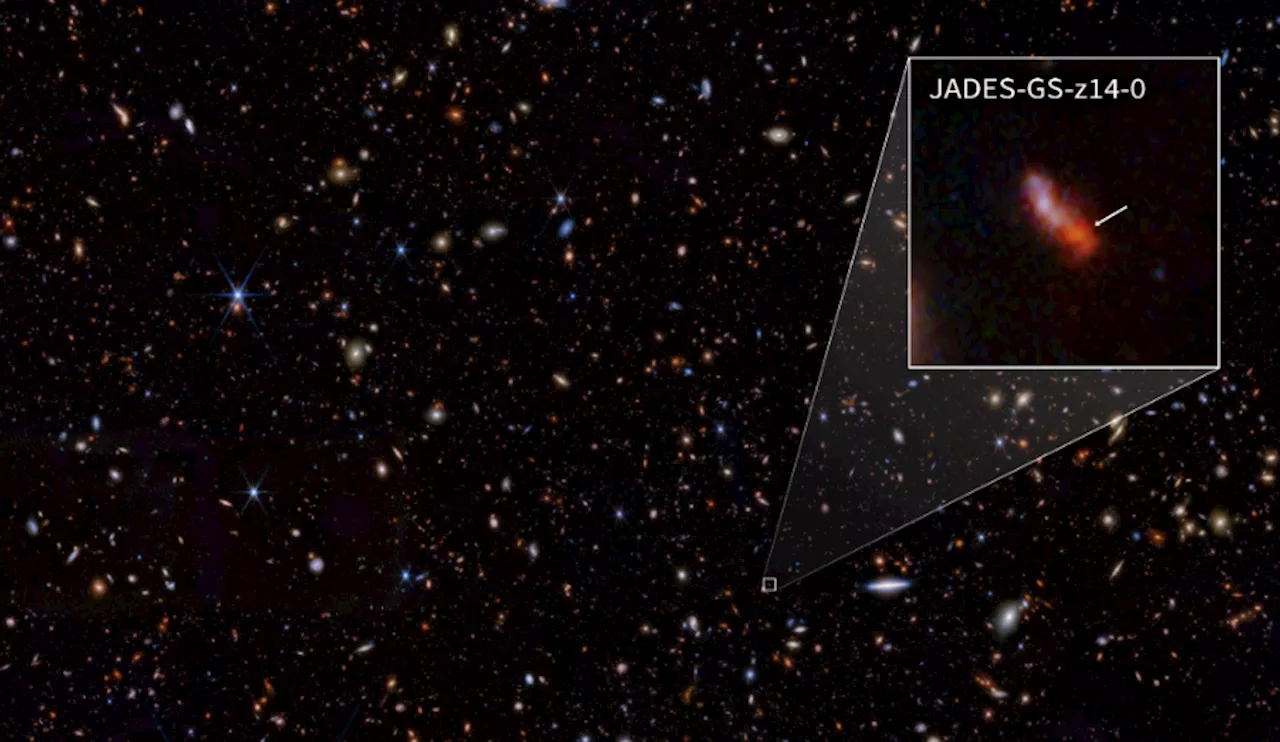A recent discovery by NASA's James Webb Space Telescope (JWST) confirmed that luminous, very red objects previously detected in the early universe upend conventional thinking about the origins and evolution of galaxies and their supermassive black holes.
A recent discovery by NASA's James Webb Space Telescope confirmed that luminous, very red objects previously detected in the early universe upend conventional thinking about the origins and evolution of galaxies and their supermassive black holes .
"We have confirmed that these appear to be packed with ancient stars -- hundreds of millions of years old -- in a universe that is only 600-800 million years old. Remarkably, these objects hold the record for the earliest signatures of old starlight," said Bingjie Wang, a postdoctoral scholar at Penn State and lead author on the paper."It was totally unexpected to find old stars in a very young universe.
"It's very confusing," said Joel Leja, assistant professor of astronomy and astrophysics at Penn State and co-author on both papers."You can make this uncomfortably fit in our current model of the universe, but only if we evoke some exotic, insanely rapid formation at the beginning of time. This is, without a doubt, the most peculiar and interesting set of objects I've seen in my career.
Aside from their unexplainable mass and age, if part of the light is indeed from supermassive black holes, then they also aren't normal supermassive black holes. They produce far more ultraviolet photons than expected, and similar objects studied with other instruments lack the characteristic signatures of supermassive black holes, such as hot dust and bright X-ray emission. But maybe the most surprising thing, the researchers said, is how massive they seem to be.
"These early galaxies would be so dense with stars -- stars that must have formed in a way we've never seen, under conditions we would never expect during a period in which we'd never expect to see them," Leja said."And for whatever reason, the universe stopped making objects like these after just a couple of billion years. They are unique to the early universe."
Galaxies Astrophysics Astronomy Stars Cosmology Big Bang Asteroids Comets And Meteors
United States Latest News, United States Headlines
Similar News:You can also read news stories similar to this one that we have collected from other news sources.
 Rocky, carbon-rich exoplanets more likely around tiny stars, James Webb Space Telescope revealsRobert Lea is a science journalist in the U.K. whose articles have been published in Physics World, New Scientist, Astronomy Magazine, All About Space, Newsweek and ZME Science. He also writes about science communication for Elsevier and the European Journal of Physics. Rob holds a bachelor of science degree in physics and astronomy from the U.K.
Rocky, carbon-rich exoplanets more likely around tiny stars, James Webb Space Telescope revealsRobert Lea is a science journalist in the U.K. whose articles have been published in Physics World, New Scientist, Astronomy Magazine, All About Space, Newsweek and ZME Science. He also writes about science communication for Elsevier and the European Journal of Physics. Rob holds a bachelor of science degree in physics and astronomy from the U.K.
Read more »
 NASA’s James Webb Space Telescope could help solve these 5 exoplanet puzzlesA lot of people are focused on signs of alien life, but the space telescope will have a lot to say about exoplanet geology and formation.
NASA’s James Webb Space Telescope could help solve these 5 exoplanet puzzlesA lot of people are focused on signs of alien life, but the space telescope will have a lot to say about exoplanet geology and formation.
Read more »
 NASA's James Webb Space Telescope finds most distant known galaxyOver the last two years, scientists have used NASA's James Webb Space Telescope to explore what astronomers refer to as Cosmic Dawn -- the period in the first few hundred million years after the big bang where the first galaxies were born.
NASA's James Webb Space Telescope finds most distant known galaxyOver the last two years, scientists have used NASA's James Webb Space Telescope to explore what astronomers refer to as Cosmic Dawn -- the period in the first few hundred million years after the big bang where the first galaxies were born.
Read more »
 NASA’S James Webb Space Telescope has found the most distant galaxy ever observedLawrence is a contributing reporter at Engadget, specializing in our AI overlords, musical doodads and, of course, garden variety gaming and tech. To that end, Lawrence once lost badly in multiplayer Mario to Nintendo’s own Shigeru Miyamoto, who laughed gleefully as he threw him down a pit.
NASA’S James Webb Space Telescope has found the most distant galaxy ever observedLawrence is a contributing reporter at Engadget, specializing in our AI overlords, musical doodads and, of course, garden variety gaming and tech. To that end, Lawrence once lost badly in multiplayer Mario to Nintendo’s own Shigeru Miyamoto, who laughed gleefully as he threw him down a pit.
Read more »
 NASA’s Webb Reveals Long-Studied Star Is Actually TwinsManaged by NASA’s Jet Propulsion Laboratory through launch, Webb’s Mid-Infrared Instrument also revealed jets of gas flowing into space from the twin stars.
NASA’s Webb Reveals Long-Studied Star Is Actually TwinsManaged by NASA’s Jet Propulsion Laboratory through launch, Webb’s Mid-Infrared Instrument also revealed jets of gas flowing into space from the twin stars.
Read more »
 NASA's Webb opens new window on supernova sciencePeering deeply into the cosmos, NASA's James Webb Space Telescope is giving scientists their first detailed glimpse of supernovae from a time when our universe was just a small fraction of its current age. A team using Webb data has identified 10 times more supernovae in the early universe than were previously known.
NASA's Webb opens new window on supernova sciencePeering deeply into the cosmos, NASA's James Webb Space Telescope is giving scientists their first detailed glimpse of supernovae from a time when our universe was just a small fraction of its current age. A team using Webb data has identified 10 times more supernovae in the early universe than were previously known.
Read more »
